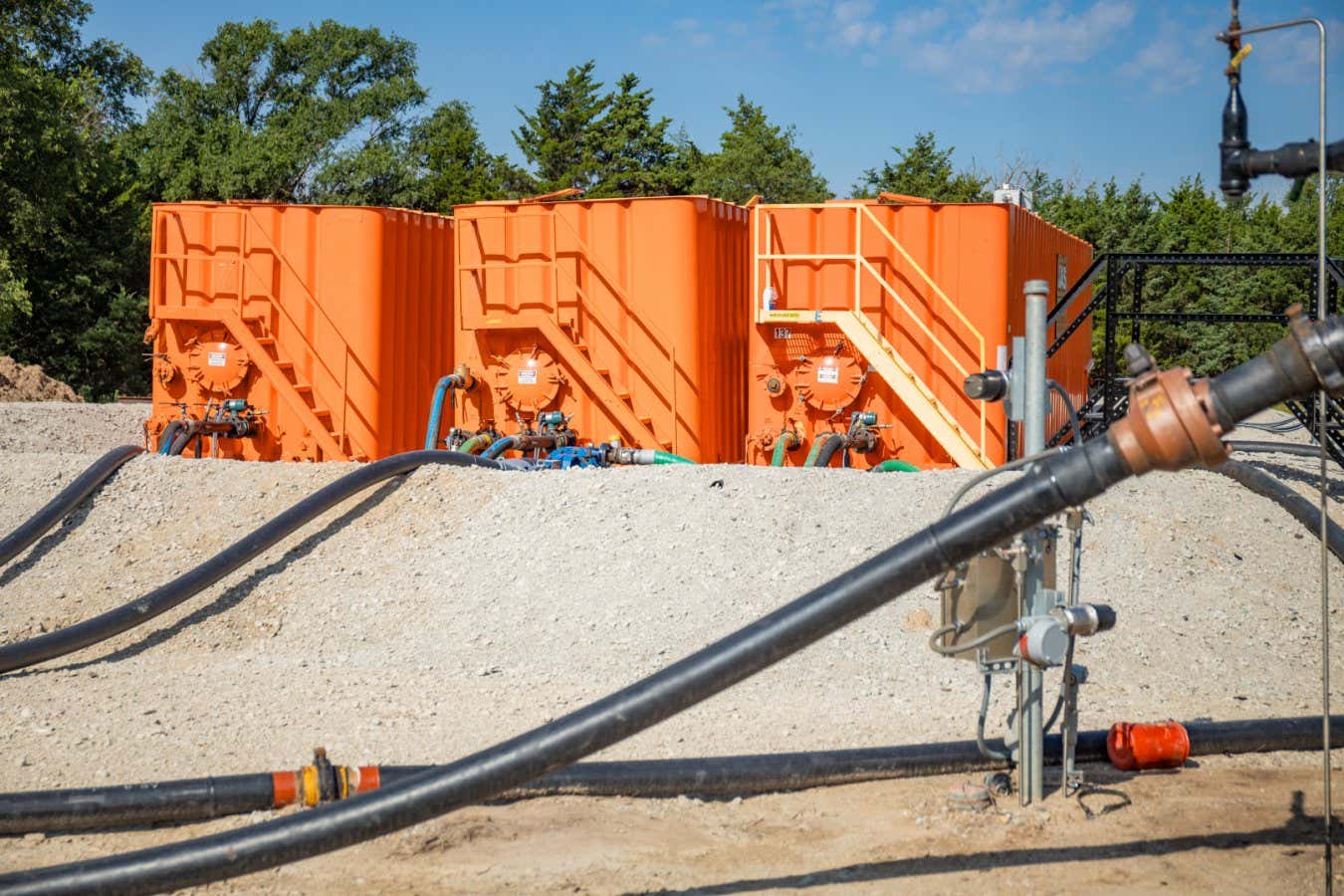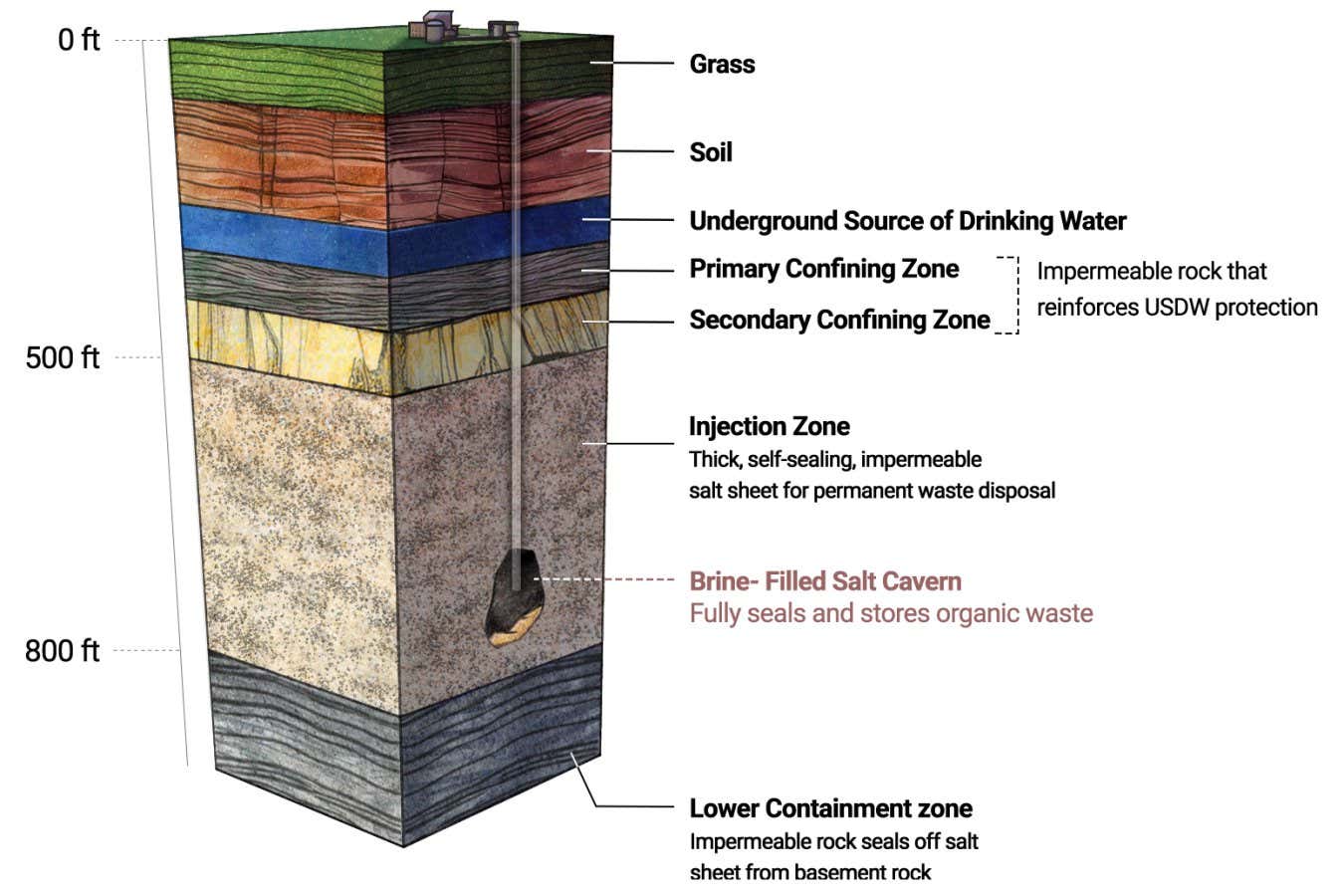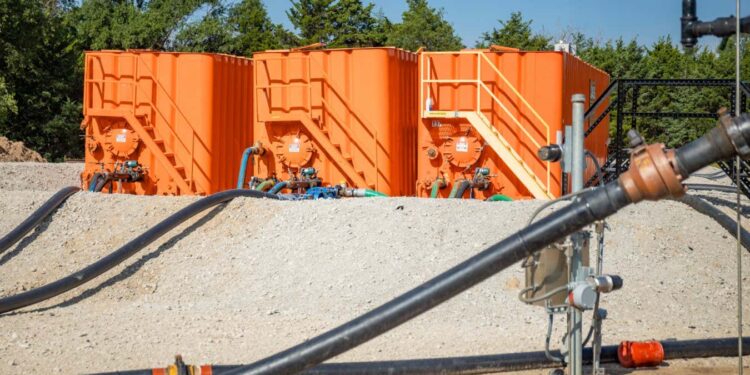
Processing tanks at a site in Kansas where waste is pumped into an underground salt cavern
Vaulted Deep
A start-up called Vaulted Deep has signed a deal with Microsoft to pump millions of tonnes of treated human excrement, manure and other organic waste deep underground as a way to remove carbon dioxide from the atmosphere. This approach could also avoid above ground contamination from PFAS “forever chemicals” and other chemical pollutants leaching out of the waste.
“We solve these two problems at once,” says Omar Abou-Sayed at Vaulted Deep. “We solve waste issues that impact local water, local air, local land, but we also do it in a way that addresses climate.”
Over the past few years, the Texas-based company has injected nearly 70,000 tonnes of carbon-rich waste deep underground, amounting to over 18,000 tonnes of carbon dioxide removed. The company’s approach is enabled by technology developed for the oil and gas industry that can inject a slurry of liquids, solids and gases underground all at once. This type of waste is normally put in landfills or spread on fields.
Injecting the waste far underground prevents it from decomposing and releasing the carbon it contains back into the atmosphere for thousands – and potentially millions – of years, says Abou-Sayed. The company then sells each tonne of CO2 removed from circulation to companies or governments to count against their own emissions.
The agreement with Microsoft to remove 4.9 million tonnes of CO2 over the next 12 years comes as the carbon dioxide removal industry has faced challenges attracting customers. Microsoft has purchased more carbon removal credits than any other corporation in its bid to be carbon negative by 2030.
Abou-Sayed says the deal will allow Vaulted Deep to develop new injection sites, beyond its two current locations. One, in Los Angeles, injects “biosolids” left over from treated wastewater about 1600 metres below the surface. The second site is in Hutchinson, Kansas, where human waste, manure and other organic material like paper sludge are injected into a salt cavern a few hundred metres belowground.
By one estimate, the world generates enough organic waste for this approach to remove as much as 5 billion tonnes of CO2 from the atmosphere each year, enough to meet much of the CO2 removals needed to get to net zero emissions.
Vaulted Deep’s goal now is to get access to as much of that waste as possible, especially the wet-solid slurries that can’t be used in other ways. “One of the things we’ve become expert at is identifying the locations of these sludgy wastes,” says Abou-Sayed. They sometimes offer to dispose of it for free, or even pay the waste generator to take it off their hands.

The system injects waste deep underground
Vaulted Deep
Storing the waste underground rather than spreading it on fields or in landfills can also reduce levels of pollution at the surface, because nitrogen and PFAS are concentrated in the waste, says Abou-Sayed. Some municipalities have run into trouble finding conventional ways to dispose of such refuse, in part due to tightening restrictions on PFAS contamination.
“It’s very novel,” says Diana Oviedo Vargas at the Stroud Water Research Center in Pennsylvania. “We need as many approaches as we can to try and deal with the issue of contaminants. Not just PFAS.” However, she points out injecting the waste deep underground doesn’t actually destroy the contaminants. “It’s kind of out of sight out of mind,” she says.
In order to ensure the injections are safe, Abou-Sayed says every site goes through a detailed permitting process managed by the US Environmental Protection Agency. They are required to prove the slurry won’t leak out of the storage area into groundwater or come back out of the well, and to minimise the risk of triggering seismic activity with the injection process.
Topics:
Source link : https://www.newscientist.com/article/2489613-why-a-tech-start-up-wants-to-pump-your-faeces-deep-underground/?utm_campaign=RSS%7CNSNS&utm_source=NSNS&utm_medium=RSS&utm_content=home
Author :
Publish date : 2025-07-24 16:00:00
Copyright for syndicated content belongs to the linked Source.











